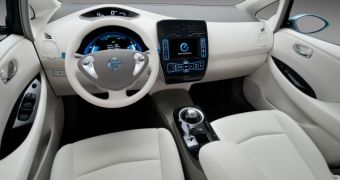Microsoft has launched a new Windows release, slapped the number “7” on it, as it did with a number of other platforms following its latest Windows client. Windows Embedded Automotive 7 was unveiled at the SAE Convergence 2010 Conference and Exhibition in Detroit today, revealing that a select number of car manufacturers and suppliers will be able to get the new OS and offer it to customers.
Designed to be at the core of next generation in-car infotainment systems, the platform offers a variety of capabilities related to communication, entertainment, navigation and information for new in-car experiences.
Just as the Windows client, but also as previous versions of Windows for the automotive industry, Windows Embedded Automotive 7 lets customers enjoy the advantages of a modern computing input model.
The platform’s natural user interface (NUI) allows for touch input, speech recognition, hands-free Bluetooth phone communications, etc.
“Microsoft deeply understands that technology collaboration is paramount to the evolution of integrated, in-vehicle infotainment systems,” said Kevin Dallas, general manager of the Windows Embedded Business Unit at Microsoft.
“We are excited to create new opportunities with Windows Embedded Automotive 7 working with our broad ecosystem of partners to bring the best in entertainment and productivity solutions to drivers and passengers around the world.”
Of course, Windows Embedded Automotive 7 is not a spin-off of Windows Vista’s successor, as is the case for Windows Embedded Standard 7, which is the embedded and componentized version of Windows 7.
Instead, Windows Embedded Automotive 7 is based on the successor of Windows CE 6, rebranded Windows Embedded Compact 7.
Microsoft has even adapted Silverlight to the latest iteration of its Windows OS for cars, allowing devs to build applications for in-car devices.
Thanks to the Microsoft Tellme technology, also included in Windows Phone 7, customers will be able to use voice commands in U.S. English, U.K. English, German, Mexican Spanish, Continental Spanish, Canadian French, Continental French and Korean.
“Consumers are increasingly demanding access to new multimedia content, productivity solutions, and connected services for entertainment and communication from their in-vehicle system, similar to what they expect from their other devices,” added Thilo Koslowski, vice president in the Industry Advisory Service Manufacturing group at Gartner Inc.
“To build and deploy compelling in-vehicle infotainment system, experienced technology partners, car makers and suppliers must come together. The result of these collaborations turn the automobile into a seamless extension of the digital lifestyle.”

 14 DAY TRIAL //
14 DAY TRIAL //